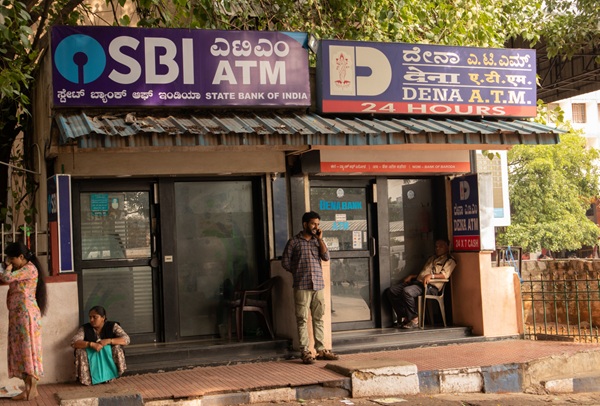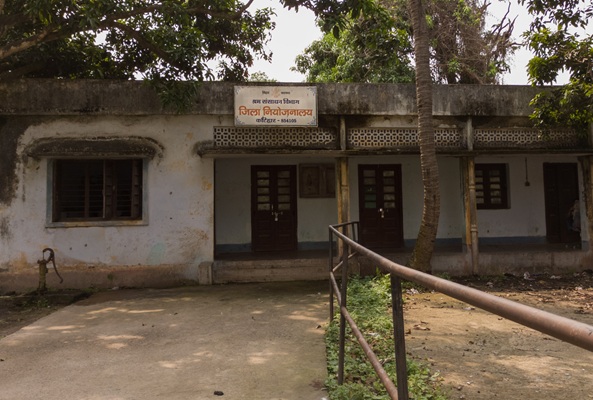.png)

Kembai Srinivasa Rao is a former banker who teaches and usually writes on Macroeconomy, Monetary policy developments, Risk Management, Corporate Governance, and the BFSI sector.
October 29, 2025 at 8:09 AM IST
The World Bank has consistently highlighted that strengthening the financial sector is crucial for achieving sustainable economic growth. A strong financial system offers several benefits, including efficient resource allocation, broader access and inclusion, stronger stability and resilience, and greater innovation and productivity.
A well-diversified and deeply entrenched financial system forms the foundation for inclusive and sustainable growth, poverty reduction, and the maximisation of the benefits of economic reforms. This, however, requires robust regulation and financial stability.
To realise the vision of Viksit Bharat 2047, India’s financial architecture, comprising banks, non-bank institutions, and other intermediaries, must be resilient and equipped to support high growth. Achieving a sustained GDP growth rate of 8-9% over the next two decades, up from 6-6.5%, will require expanding a diverse network of financial intermediaries.
Network of Lenders
In a bank-driven economy, where banks hold around 60% and non-banking financial entities about 20% of financial sector assets, institutional capacity must be strengthened to support long-term growth. Together, banks and non-banks, excluding insurance, form the core of the financial industry and finance growth across sectors.
As of March 2025, India’s financial sector comprised 140 banks and 9,300 non-banking financial companies regulated by the Reserve Bank of India. Both segments have recovered strongly after the pandemic, with NBFCs recording loan growth of around 15%, often exceeding banks’ 11%, particularly in retail and MSME lending.
The number of bank branches rose from about 155,000 in March 2020 to about 160,500 by September 2024, with rural branches surpassing 100,000. The number of ATMs increased only marginally from 211,332 in 2020-21 to 211,654 in 2024-25 as customers shifted towards digital wallets and cashless transactions. Meanwhile, POS terminals grew from 3.72 million in March 2020 to 8.96 million by June 2024.
Nearly all banks now offer mobile and internet banking, digital wallets, and lending apps, with nearly 1 billion debit cards in circulation. The sector has expanded both its physical and digital reach while diversifying product offerings. Consequently, the RBI Financial Inclusion Index improved from 53.6 in March 2021 to 67 in March 2025 (on a scale of 0 to 100).
Compared to the global financial landscape, however, India still faces a significant gap in banking density and credit penetration.
Global Banks
The global banking system today is characterized by high financial depth and intense competition. The data below offers a snapshot of global banking penetration and the relative size of banking assets compared to GDP.
Considering population size, financial inclusion, and assets-to-GDP ratio, India lags behind its global peers in both the number of banking institutions and total volume of assets. The US, with 2,156 banks, holds banking assets worth 90% of GDP, while China’s 4,000 banks hold assets amounting to 215% of GDP and achieved an inclusion index of 88.
India, with only 140 banks, has an assets-to-GDP ratio of 125% and a financial inclusion index of 80. The US has 12 banks among the world’s top 100 by asset size, while China has 21, Germany has 4, Japan has 7, and India just 2. India’s credit-to-GDP ratio stands at 57%, significantly below China’s 177% and Japan’s 165%. Clearly, India’s relatively small number of banks limits its asset base and global competitiveness.
Gaps and Solutions
Credit risk appetite remains modest. Risk management systems and debt resolution frameworks are still maturing to ensure full confidence and asset quality.
It is time to revisit key recommendations from the RBI internal working group, which proposed measures such as higher initial capital requirements, revised promoter shareholding limits, allowing large NBFCs to convert into banks, and updating listing norms. Under the scale-based supervision framework introduced by the RBI in 2022, 15 NBFCs are in the upper layer, some of which could potentially evolve into universal banks.
Of the 33 recommendations of the working group on private bank ownership and corporate structure (November 2021), the RBI has accepted 21. However, no direct NBFC has yet been granted a universal bank licence, even among those in the upper regulatory layer. The only recent approval has been for AU Small Finance Bank, which was permitted to transition into a universal bank in August 2025.
Similarly, the High Powered Committee on Urban Cooperative Banks (UCBs), chaired by former RBI Deputy Governor R. Gandhi, recommended that strong, well-managed cooperative banks be allowed to convert voluntarily into small finance or commercial banks. Since 2004, new UCB licenses have been on hold. In light of sectoral improvements and stakeholder demand, the RBI has proposed a discussion paper on new UCB licensing, a positive step forward.
There is substantial potential to establish new banking and non-banking institutions to complement the existing network and expand lending activities. The differentiated banks — 11 Small Finance Banks and five Payments Banks — created following the Nachiket Mor Committee recommendations now hold combined assets worth ₹5.5 trillion, underscoring how new institutions can meaningfully advance financial inclusion and enlarge asset base.
The bold and transformative measures announced in the latest monetary policy, empowering banks to expand lending, mark a milestone in institutional capacity-building. Building on these reforms, policymakers and regulators should collaborate to create a new generation of lenders to enhance the financial sector’s ability to support India’s transformation into a developed economy by 2047.
In this context, merging public sector banks may not be the optimal strategy for expanding credit access. Instead, allowing more banks and non-bank lenders and greater competition will be essential to stimulate credit growth and sustain India’s economic momentum.




